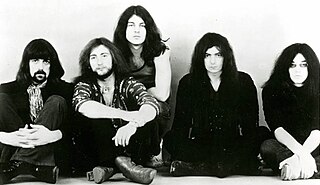
Deep Purple are an English rock band formed in London in 1967. They are considered to be among the pioneers of heavy metal and modern hard rock, but their musical approach has changed over the years. Originally formed as a psychedelic rock and progressive rock band, they shifted to a heavier sound with their 1970 album Deep Purple in Rock. Deep Purple, together with Led Zeppelin and Black Sabbath, have been referred to as the "unholy trinity of British hard rock and heavy metal in the early to mid-seventies". They were listed in the 1975 Guinness Book of World Records as "the globe's loudest band" for a 1972 concert at London's Rainbow Theatre and have sold over 100 million albums worldwide.
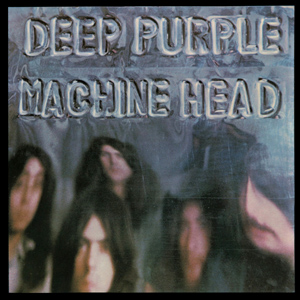
Machine Head is the sixth studio album by English rock band Deep Purple. It was recorded in December 1971 in Montreux, Switzerland, and released on 25 March 1972 on Purple Records. It is the band's third album to feature the Mark II line-up of Ritchie Blackmore, Ian Gillan, Roger Glover, Jon Lord and Ian Paice.

Made in Japan is a double live album by English rock band Deep Purple, recorded during their first tour of Japan in August 1972. It was originally released in December 1972, with a US release in late March 1973, and became a commercial and critical success.
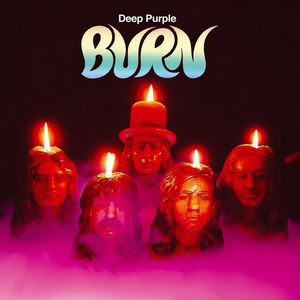
Burn is the eighth studio album by English rock band Deep Purple, released on 15 February 1974. It was the first album to feature then-unknown lead singer David Coverdale. The group's Mark III line-up, of which this was the recording debut, included Coverdale, Glenn Hughes on bass and vocals, Ritchie Blackmore on guitar, Jon Lord on keyboards, and Ian Paice on drums.
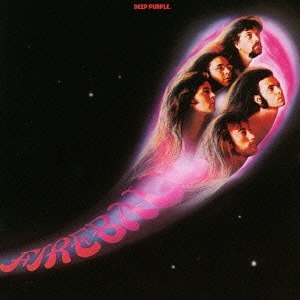
Fireball is the fifth studio album by English rock band Deep Purple, released in 1971 as the second album with the Mark II line-up, consisting of Ritchie Blackmore, Ian Gillan, Roger Glover, Jon Lord and Ian Paice. It was recorded at various times between September 1970 and June 1971. It became the first of the band's three UK No. 1 albums, though it did not stay on the charts as long as its predecessor, Deep Purple in Rock. Even though the album has sold over a million copies in the UK, it has never received a certification there.

Perfect Strangers is the eleventh studio album by English rock band Deep Purple, released on 29 October 1984. It was the most successful album recorded by the re-formed 'Mark II' line-up.

Deep Purple in Concert is a live album by the English hard rock band Deep Purple, recorded by the BBC for their "In Concert" live series in 1970 and 1972. First released in 1980 in the UK, with the current US edition being made available in 2001.

Deepest Purple: The Very Best of Deep Purple is a compilation album by the English hard rock band Deep Purple, released in 1980 on LP. It features the original hits of Deep Purple before their 1984 reunion. Aided by a TV advertising campaign it would become Purple's third UK No. 1 album. In 1984 this compilation additionally was published on CD.
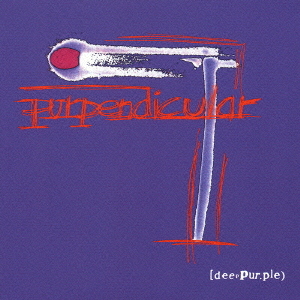
Purpendicular is the fifteenth studio album by the English rock band Deep Purple, released in 1996. It is their first album with guitarist Steve Morse from Dixie Dregs, who replaced Ritchie Blackmore. The album entered the UK Charts on 17 February 1996, where it peaked at No. 58.

The House of Blue Light is the twelfth studio album by English rock band Deep Purple, released on 16 January 1987 by Polydor Records. It was the second recording by the reformed Mark II line-up, and the sixth studio album overall by this formation of the band.
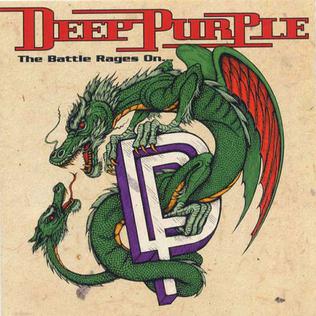
The Battle Rages On... is the fourteenth studio album by the English hard rock band Deep Purple, released on July 19, 1993 (Europe). It is the last album recorded with the band's classic Mk II line-up, which reunited for a second time.
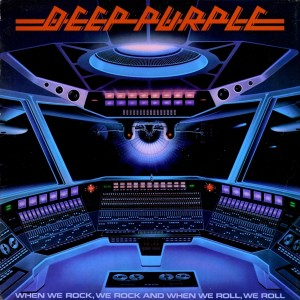
When We Rock, We Rock, and When We Roll, We Roll is a compilation album by Deep Purple featuring some of their most popular songs from 1968 to 1974.
"Woman from Tokyo" is a song by the English rock band Deep Purple. It was first released on their 1973 album Who Do We Think We Are, and later as a single in various territories. A UK-release was planned for February 1973, but was cancelled.

The Anthology is a compilation album by the English hard rock band Deep Purple, containing material by Mks I (1968–1969), II (1969–1973), III (1973–1975) and IV (1975–1976) line-ups. It was released as a double vinyl album and double-cassette, and included a few previously unreleased tracks and mixes. The sleeve-notes were written by Chris Charlesworth, author of Deep Purple – The Illustrated Biography.

Powerhouse is a 1977 compilation album by Deep Purple, featuring previously unreleased live and studio tracks from the band's Mark II line-up at the height of its powers. The album achieved Gold Certification in Japan.

The Mark II Purple Singles is a compilation album by Deep Purple. The album was released in 1979. It claimed to be Mark II both because it focused solely on the second line-up of the band and because it was intended as a second volume to the previous year's The Deep Purple Singles A's and B's. A version with purple vinyl is also available.
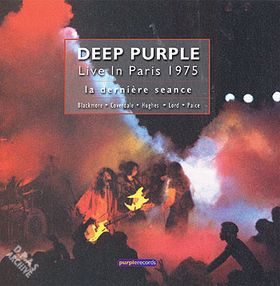
Live in Paris 1975 is a live album by the English hard rock band Deep Purple, recorded in 1975 at the Palais des Sports in Paris. It was meant to be released before the 1975 Come Taste the Band album, but was not released until 2001 by Purple Records.

Deep Purple in Rock is the fourth studio album by English rock band Deep Purple, released on 5 June 1970. It was the first studio album recorded by the Mark II line-up of Ritchie Blackmore, Ian Gillan, Roger Glover, Jon Lord and Ian Paice.
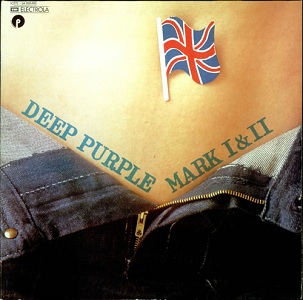
Mark I & II is a 1973 compilation album by Deep Purple, released by EMI's German subsidiary Electrola. It contains material originally released between 1968 and 1973. This double LP was released after Ian Gillan and Roger Glover had left Deep Purple in June 1973.


















